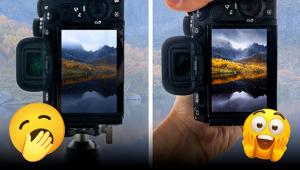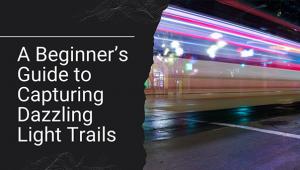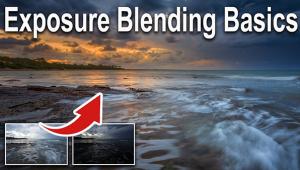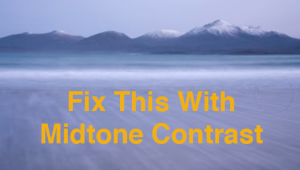3 Screw-in Filters for Fabulous Fall Foliage Photography Fun

Experienced photographers appreciate the value of filters, the kind that go in front of the lens. Screw-in filters alter the characteristics of light before it reaches the image sensor—something not even Photoshop can do. Here are three I recommend for autumn leaf colors and all fall festivities.
Yes Millennials, there was a time not oh-so long ago that nearly every photographer had a collection of glass filters in various sizes and colors. Some were designed specifically for shooting black & white film, and others were used to achieve white balance with color film. Many were for special effects. I nearly forgot the omnipresent “protective filter,” one of the few still commonly used today. While such a filter arsenal is no longer required for good photography, that doesn’t mean that screw-in filters are no longer useful.

If you live in an area that doesn’t experience leaves changing colors every fall, I’m sorry. You probably have some other natural phenomena to compensate, like earthquakes, blistering heat or month-long blinding snowstorms. There’s more to fall foliage than covered bridges in Vermont and apple orchards in Wisconsin, but we’re not going to tell you about them. Nope. Just watch a travel show about the Blue Ridge Parkway in October and you’ll learn all you need to know.
And if you do decide to witness the dramatic fall color changes firsthand, bring these three filters.
 Red Enhancers
Red Enhancers
These nearly colorless filters add snap and vibrancy to fall colors. Red Enhancers are not just slices of rose-colored glass. Most red-enhancing filters are made of didymium, a material commonly found in the lenses of protective eyewear used by professional glass blowers. It perks up the red tones and subdues the yellows. Its name stems from the fact that it’s a mixture of two “rare earth” elements: praseodymium (Pr) and neodymium (Nd).
As is the case with most filters for color photography, you can increase the Red Enhancer’s effect by slightly (and I mean slightly) underexposing. You can also tweak the Saturation setting on your digital camera to give the colors a little more pop.
For some real fun, experiment with the camera’s White Balance setting. Instead of Custom or Auto (you should always use Custom when possible) try the Incandescent, Fluorescent and any other options available. Note that your camera may identify these settings by different names.
 Some cameras, like the superb Fujifilm X-T4, allow you to tweak the White Balance even further. Shown above is a snip from the X-T4 Owner’s Manual. You can adjust the values in small increments quite easily.
Some cameras, like the superb Fujifilm X-T4, allow you to tweak the White Balance even further. Shown above is a snip from the X-T4 Owner’s Manual. You can adjust the values in small increments quite easily.

Polarizing Filter
A polarizing filter improves color images three ways. It removes surface glare from shiny objects, thereby allowing the true color of fall leaves and other reflective things to be seen. That’s a huge benefit, and a reason why you should use Polarizers year round. And as everyone knows, Polarizers allow you to peek under the surface of the water and wipe reflections from shop windows (under ideal conditions).
Second, Polarizers darken blue skies a controllable amount without changing any other colors. White, puffy cloud structures are accentuated. Grass becomes more richly saturated. Polarizers are like a talented makeup artist for Mother Nature.
For more information about polarizing filters, check out this Shutterbug article: How Polarizing Filters Work and Why You Should Use One on Your DSLR Camera.
Finally, Polarizers function as de facto Neutral Density filters. Because they absorb a significant amount of light—typically 1.5 to 2 f/stops—they work as NDs more-or-less accidentally. That’s not a plus in every situation, but it does allow you to use a larger aperture at the beach, for example.

Soft Focus
If you have one of the many Lensbaby lenses, you can skip this section. Soft Focus filters do a tiny bit of what a Lensbaby can do.
Soft Focus filters knock the hard edges off objects and gently blend the colors. This gives colorful fall leaves a dreamy look. For the same reason they’re frequently used to create moody portrait and glamour images. Taken to the extreme, they can turn a snapshot of colorful leaves into an abstract of reds, yellows and oranges. They’re available is different strengths, but I’ve always gravitated toward the most severe.
Some photographers have gotten interesting soft focus effects by stretching a section of plastic wrap over the lens front or lens shade. Crinkle the wrap first, or ripple the surface with your finger to increase softness. Poke a hole in the center and if you’re lucky the result is an unsharp zone surrounding a sharper middle. Use aluminum foil instead of Saran Wrap and absolutely nothing happens.

Conclusion
If you live in New England, Michigan, Arkansas or in one of the other fall foliage hot spots, you have no excuse—go out and capture some of nature’s autumnal bonfire. If you’re within driving distance of the Blue Ridge Mountains, be sure to say “hey” to Mt. Pisgah for me. The rest of you—hop on a plane, bus or Harley and go see the most dramatic fireworks display known to man.
—Jon Sienkiewicz
(As an Amazon Associate, Shutterbug earns from qualifying purchases linked in this story.)
- Log in or register to post comments












































